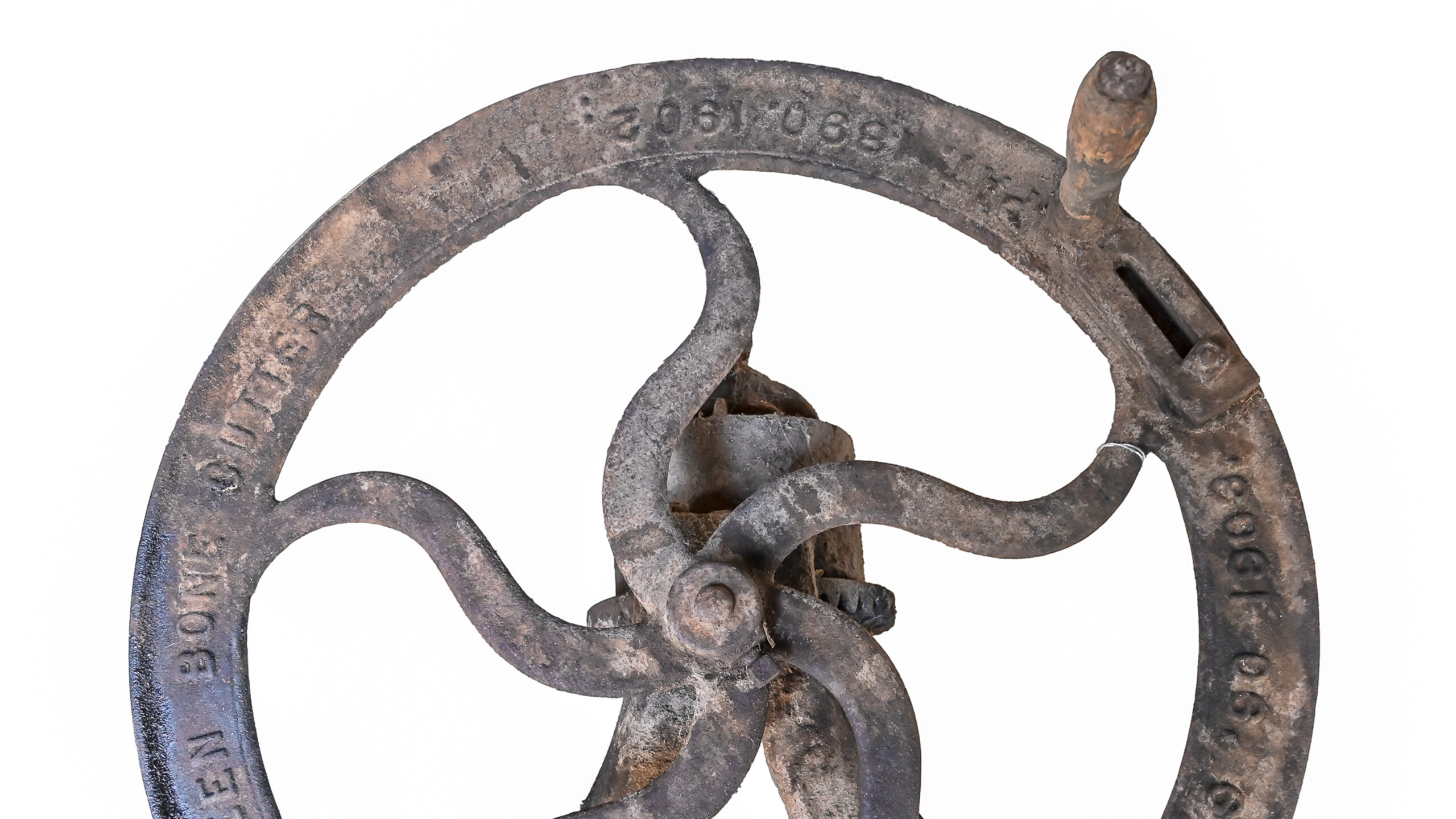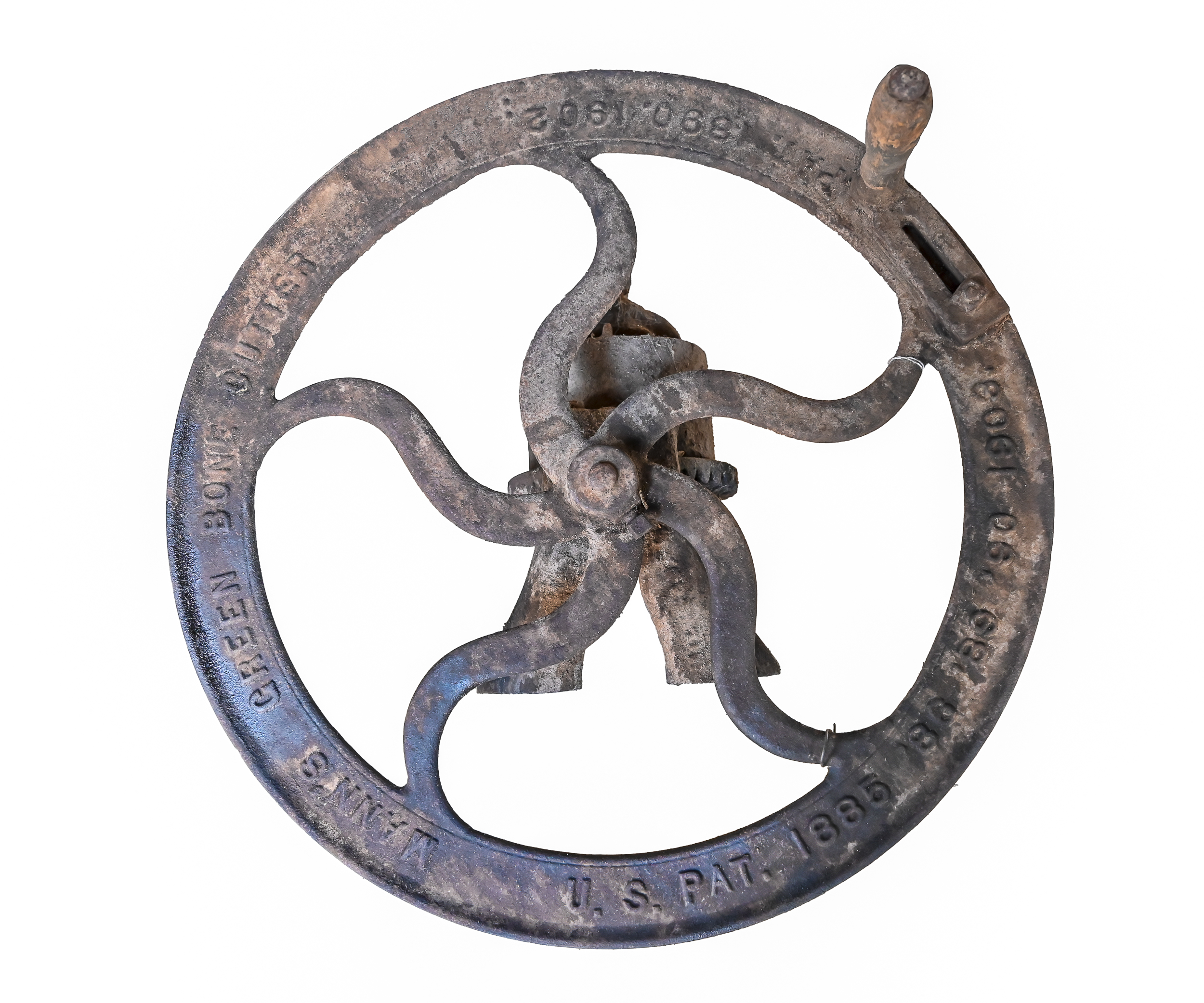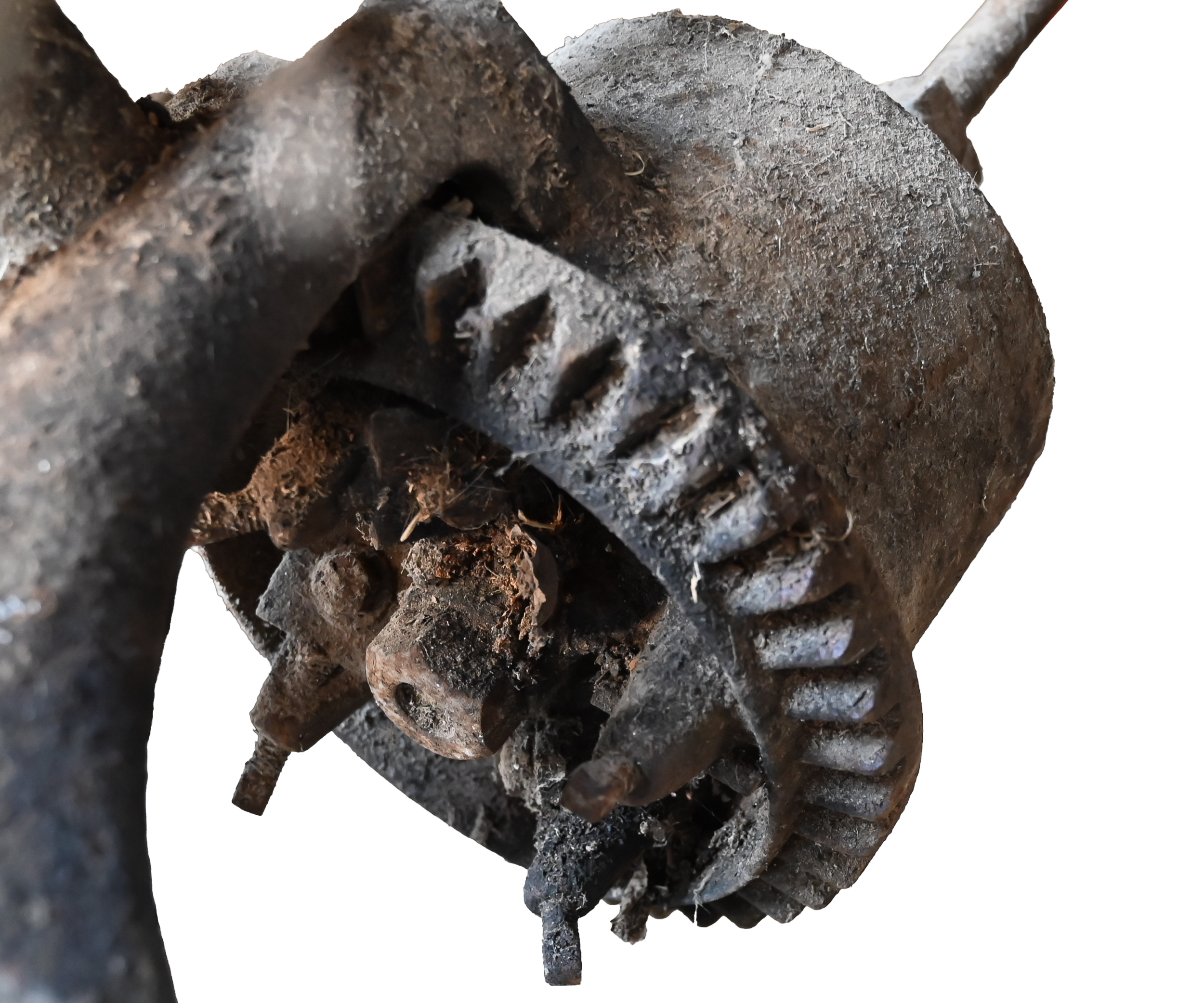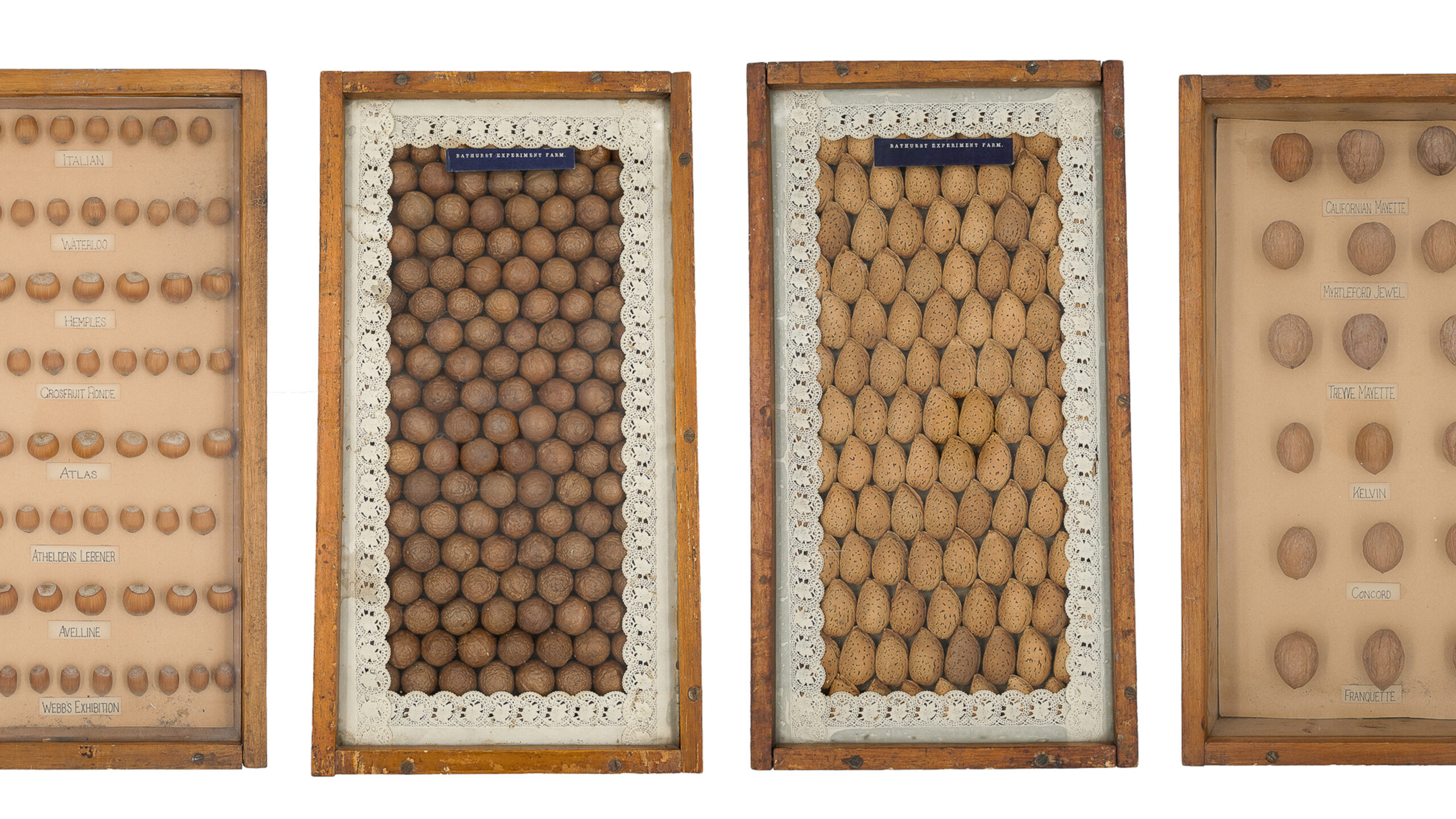Bone Appétit
Turning Waste Into Profitable Poultry
The establishment of the Bathurst Experiment Farm in 1895 (later the Bathurst Agricultural Research Station) was part of a move by the New South Wales Government to increase agricultural capacity through the systematic application of science and education to agriculture.
The rather gruesome looking device in the first photograph is the grinding gear of a Mann’s Green Bone Cutter and illustrates this move to scientific and more lucrative agricultural production, specifically through the profitable use of waste.
The addition of bones to chicken feed was well-known to increase calcium and protein levels and therefore shell strength and egg yield. Dry bones could be cut or ground in most mills but lacked the nitrogen, albumen, carbonates and phosphates of lime contained within fresher bones.
However, the problem was getting fresh meat and bones as a waste product, also known as green bones, into a form that a hen could consume. The Mann’s Green Bone Cutter, first produced in 1885 solved this problem by cutting green bones into the finest of shavings. A form it was claimed would ‘create no dentist’s bill for the hen.’
The Farm’s remit included the demonstration of applications and techniques so (although poultry was not part of the Farm’s research program) it is likely that the results from using Mann’s grinder would have been shared with visiting farmers. This work enabled poultry farmers to test the manufacturer’s claims that cut green bones would ‘double the number of eggs’ and ‘hatch vigorous chicks.’






